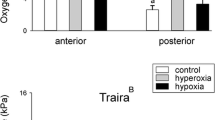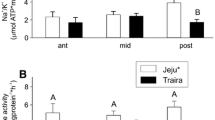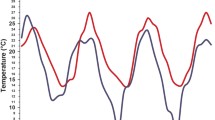Abstract
The air-breathing crabs Cardisoma hirtipes and C. carnifex trap 18.8 and 15.5 ml of air respectively within the lumen of the lung (branchial chamber) when submerging, rather than breathe water, and suffer a hypoxic hypercapnia. The role, effect and advantage of trapping air within the lung during submergence was assessed for both species. Cardisomaretained at least 85% of the lung air during a 30-min submergence. The mass-specific O2uptake rate (MO2) of air-breathing C. hirtipes and C. carnifexwas reduced by at least 60% during submersion and the crabs additionally consumed 80% or more of the O2stored in the trapped air. After 30 min of submergence the large arterial-venous difference in haemolymph partial pressure of O2 (PO2) and O2 content (CO2) of air-breathingCardisoma was completely removed, consistent with near-zero O2 transport. Removing the air from the lung lumen did not restore MO2 but rather deprived the crab of an O2 store and, in C. hirtipes, promoted anaerobiosis. Submergence reduced the haemolymph CO2 by 50% or more, regardless of the presence of trapped air in their lungs. C. hirtipes and C. carnifex with a retained air bubble lost Na at only 2.6 and 2.3 μmol g-1 h-1, respectively, but at 3.9 and 5.0 μmol g-1 h-1 without the air bubble. Unidirectional Na uptake in C. hirtipes was only 0.90 μmol g-1 h-1 when air was trapped in the lung but 1.74 μmol g-1 h-1 when the bubble was removed. In C. carnifex these rates were 1.88 and 2.79 μmol g-1 h-1 respectively. C. hirtipes and C. carnifex both trap air within the lung and avoid exposing exchange surfaces to water. There is no large respiratory advantage to expelling the air but there are significant ion regulation cost savings in retaining it.
Similar content being viewed by others
Author information
Authors and Affiliations
Corresponding author
Rights and permissions
About this article
Cite this article
Morris, S., Dela-Cruz, J. The ecophysiological significance of lung-air retention during submersion by the air-breathing crabs Cardisoma carnifex and Cardisoma hirtipes. EBO 3, 1–19 (1998). https://doi.org/10.1007/s00898-998-0010-6
Received:
Accepted:
Issue Date:
DOI: https://doi.org/10.1007/s00898-998-0010-6




